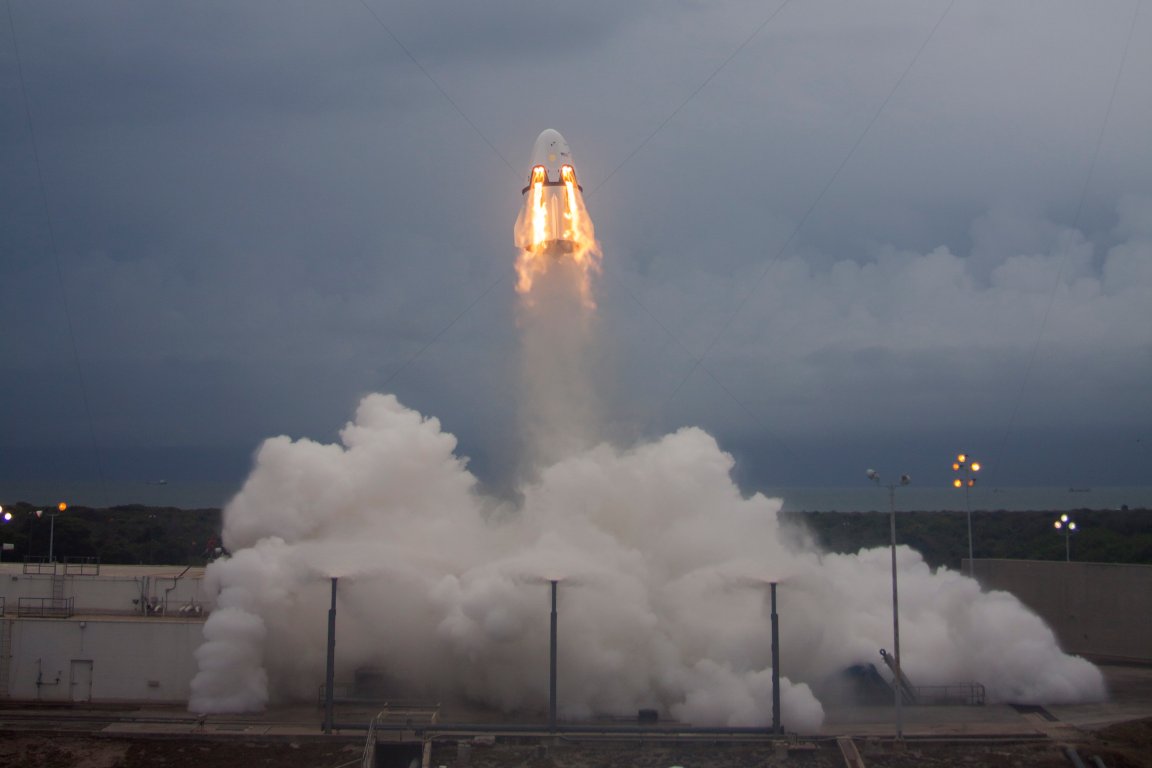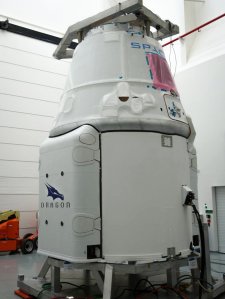

SpaceX, one of two private companies contracted by NASA to ferry astronauts to the International Space Station, successfully tested the launch pad abort sequence on the Dragon crew capsule it plans to use to help ensure astronauts safety.
For anyone used to the fire and roar of a conventional rocket blast-off, the test at Complex 40 at Capa Canaveral in Florida was markedly undramatic. But a lack of drama is exactly what SpaceX and NASA were hoping to achieve.

The escape system integrated into the Dragon spacecraft differs considerably from the Apollo-era escape tower attached to the nose of the crew capsules, to be ejected and discarded later in those missions. Dragon uses eight “SuperDraco” nitrogen tetroxide-monomethyhydrazine rockets engineered directly into the capsule. On a normal flight, those rocket motors are used to cushion the landing of the capsule on its eventual return to Earth.
In an emergency, of the sort tested today, the motors would jump into action early. The rockets ignite to produce 120,000 pounds of axial force to separate the spacecraft from a malfunctioning booster. The trunk, or unpressurized service and cargo bay, of the spacecraft is jettisoned in mid-flight. After several seconds, the crew capsule deploys three parachutes to waft it gently back to the ground—or, in most cases, to the Atlantic Ocean. This takes “crash landing” to a whole new level.
The module lands several miles downrange of the launch site, where the crew would be plucked from the water by Air Force rescue, who stand by at every launch. The whole process, excluding crew recovery, takes a little under two minutes.

This capability represents a marked improvement over the abort sequences available for the last major American crew-lift vehicle, the Space Shuttle. Early shuttle flights were equipped with ejection seats, but full crews occupied two decks and the ability to eject was never engineered into the design. Individual ejection seats also offered escape only during a relatively limited portion of the launch regime. While sitting on the pad or at very high speeds or altitudes, the ejection seats offered very low survivability to their users (i.e., at most junctures, if you tried to eject, you would die).
A number of additional bailout options were introduced in the wake of the Challenger disaster, but all of these required a number of convoluted steps which would certainly have been difficult to successfully complete during an actual emergency.
By incorporating the protection of the capsule, the Dragon escape system can be used at much higher speeds and lower altitudes than ejection seats. The system also requires almost no actions on the part of the crew, making it far more reliable in practice than Space Shuttle bail-out modes. This week’s test is only the first, validating the system’s performance at zero altitude and zero speed. Future tests will put the Dragon through its paces in-flight from the top of a real booster.
The Dragon capsules have already proven their capability in getting from ground to the ISS with cargo on board. The launch vehicles have been used in five cargo resupply missions to the space station. The company expects to have completely fulfilled NASA’s testing requirements for manned launches by 2017. The terms of the contract will require at least two and possibly as many as six crew transfers to ISS.
And while it is true that there have been very few manned disasters in spaceflight, it is always good to provide safeguards in case the unexpected occurs.
From Quarks to Quasars is two people, Jaime and Jolene. We want to make the world a more sciencey place. We’re doing that, but with your help, we can do even more.
FQTQ takes a lot of time, money, and effort. Here, you can support us, get to know us, and access extra content: